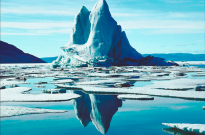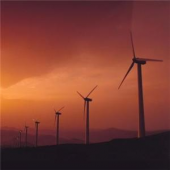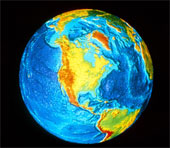The big issue is climate change. A very real phenomenon, explained by a vast portfolio of studies and highlighted through our stories of a changing world.So here are the things we know
The Earth's climate has always changed.
The planet has gone through a number of ice ages, and humans have flocked to and been driven from the UK as the climate has fluctuated.
The greenhouse effect, whereby the planet is warmed by the sun and atmospheric gases, has been known since 1824 and was reliably tested by scientists in 1858, showing the more greenhouse gases there are, the hotter the planet will be.
Carbon dioxide is the most abundant greenhouse gas.
In 1832, the Earth's atmosphere contained 284 parts per million of carbon dioxide, according to the Carbon Dioxide Information Analysis Centre (data set found here).
In February 2010, the atmosphere contained 389.91 parts per million, according to the National Oceanic and Atmospheric Administration.
These carbon emissions are accelerating at an unanticipated speed.
According to the Global Carbon Project, carbon emissions have grown four times faster since the year 2000.
Greenhouse gases are released into the atmosphere in two main ways, through fossil fuels, such as oil, gas or coal, and deforestation. Fossil fuels and forests lock carbon underground or in tree roots and trunks. When we burn them or cut them down, we are releasing carbon dioxide into the atmosphere and adding to the carbon cycle.
The most recent assessment from the Intergovernmental Panel on Climate Change says there is a 90% chance mankind is responsible for our changing climate.
This has been backed by scientists throughout the world. The National Wildlife Federation lists the huge number of international science academies that have confirmed their acceptance of manmade climate change.
Follow this link to watch this introductory video on the topic of climate change, provided for teachers but useful to us all!
So what's the big deal?
The more greenhouse gases warm the planet, the more problems they create.
As the Arctic and Antarctic melt, they lose their capacity to reflect heat away from the Earth, so instead the ground or sea absorbs the heat, speeding the melting ice and adding to the general warming trend. 
This interesting article on ocean acidification explains how carbon dioxide that seeps into the oceans can also acidify the water, damaging organisms and life under the sea.
As the planet warms up and the global climate changes, we can expect more extreme and unusual weather events in localised areas. The tales of unexpected droughts and flooding in our stories is a key example of this.
Along with the immediate human cost of extreme weather, we begin to lose track of the natural cycles and patterns we rely on to plan and plant crops, feed cattle, collect water and grow food.
The UK Government has launched an interactive Google Earth map 'layer' showing what could happen to the world should average global temperatures rise by 4 degrees Celsius. The map allows users to interact with the science behind its development, and also includes short videos of scientists explaining their research.
What can we do about it?
All the information sources above agree that a reduction in greenhouse gas emissions would be beneficial to earth and all the people who live on it. There are a number of ways we can set about doing this, through reducing our car use, changing the way we eat or just being more thoughtful about the way we move through life.
Scientists, politicians, environmentalists, me and you - we are all entitled to ask questions, learn more and take action. We don't have to wait for the world's governments to tackle the problem.
As individuals we can decide for ourselves what role to play. We can all take action and start reducing our carbon dioxide emissions today. Want to know what you can do? Start here.

